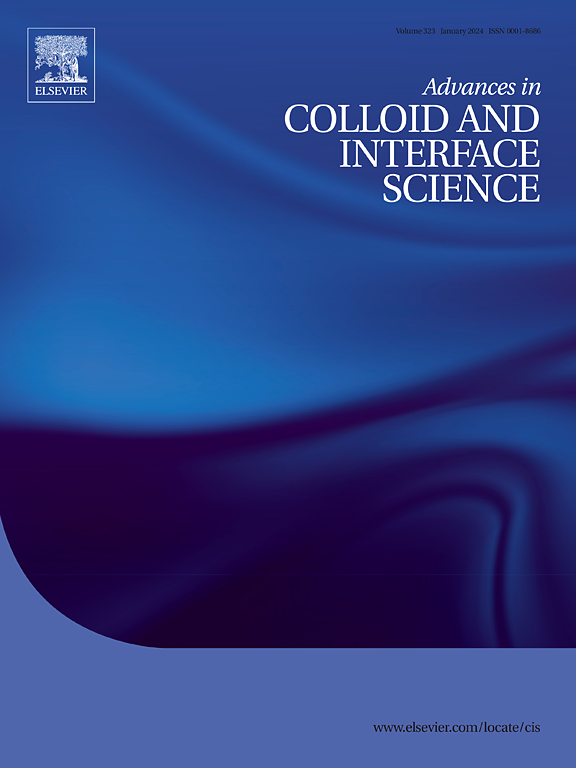界面静电荷促进化学:反应和机理
IF 19.3
1区 化学
Q1 CHEMISTRY, PHYSICAL
引用次数: 0
摘要
界面静电荷是自然界中普遍存在的现象。近年来,人们对静电荷的化学反应性越来越感兴趣。界面静电电荷驱动的化学合成减少了对氧化还原试剂、催化剂和有害溶剂的依赖,从而促进了化学工业的环境可持续性和成本效益。静电荷可以在固体、液体和气体之间的界面上产生。静电电荷的化学性质已经在固体和液体之间以及液体和气体之间的界面上观察到。本文综述了界面静电荷的化学反应性及其机理。静电荷在提供电子和产生电场方面起着基本作用,电场反过来又诱导电荷转移、自由基形成和分子取向。我们对界面电荷在化学反应中的作用进行了分类,并提供了新的视角。界面静电荷可以在机械能输入、电源和界面从固液到液气转变的情况下产生。涉及无机、有机化合物和生物分子的氧化还原和催化反应是由界面静电荷驱动的。静电化学机制目前是一个争论的主题,因为没有足够的实验证据。讨论了与界面静电化学相关的挑战和机遇。了解界面静电荷的反应性可以用来理解自然界的静电现象,推进绿色化学,甚至研究生命的起源。我们希望这个新兴的话题能够吸引包括界面化学和静电学在内的学科的科学家。本文章由计算机程序翻译,如有差异,请以英文原文为准。

Interfacial electrostatic charges promoted chemistry: Reactions and mechanisms
Interfacial electrostatic charges are a universal phenomenon in nature. In recent years, interest in the chemical reactivity of electrostatic charges has grown. Interfacial electrostatic charge-driven chemical synthesis reduces the reliance on redox reagents, catalysts, and hazardous solvents, which promotes environmental sustainability and cost-effectiveness in the chemical industry. Electrostatic charges can be generated at the interfaces between solids, liquids, and gases. The chemical properties of electrostatic charges have been observed at interfaces between solids and liquids, and between liquids and gases. This review summarized the chemical reactivity of interfacial electrostatic charges and its mechanisms. Electrostatic charges play a fundamental role in providing electrons and creating electric fields, which in turn induce charge transfer, radical formation, and molecular orientation. We classified the role of interfacial charges in chemical reactions and provided new perspectives. Interfacial electrostatic charges can be generated with mechanical energy input, a power supply and interface transition from solid-liquid to liquid-gas. Redox and catalytic reactions involving inorganic, organic compounds and biomolecules are driven by interfacial electrostatic charges. Electrostatic chemistry mechanisms are currently a subject of debate because there is insufficient experimental evidence. Challenges and opportunities associated with interfacial electrostatic chemistry are discussed. Knowledge of the reactivity of interfacial electrostatic charges could be used to understand electrostatic phenomena in nature, advance green chemistry, and even study the origins of life. We expect this emerging topic will appeal to scientists in disciplines including interfacial chemistry and electrostatics.
求助全文
通过发布文献求助,成功后即可免费获取论文全文。
去求助
来源期刊
CiteScore
28.50
自引率
2.60%
发文量
175
审稿时长
31 days
期刊介绍:
"Advances in Colloid and Interface Science" is an international journal that focuses on experimental and theoretical developments in interfacial and colloidal phenomena. The journal covers a wide range of disciplines including biology, chemistry, physics, and technology.
The journal accepts review articles on any topic within the scope of colloid and interface science. These articles should provide an in-depth analysis of the subject matter, offering a critical review of the current state of the field. The author's informed opinion on the topic should also be included. The manuscript should compare and contrast ideas found in the reviewed literature and address the limitations of these ideas.
Typically, the articles published in this journal are written by recognized experts in the field.

 求助内容:
求助内容: 应助结果提醒方式:
应助结果提醒方式:


